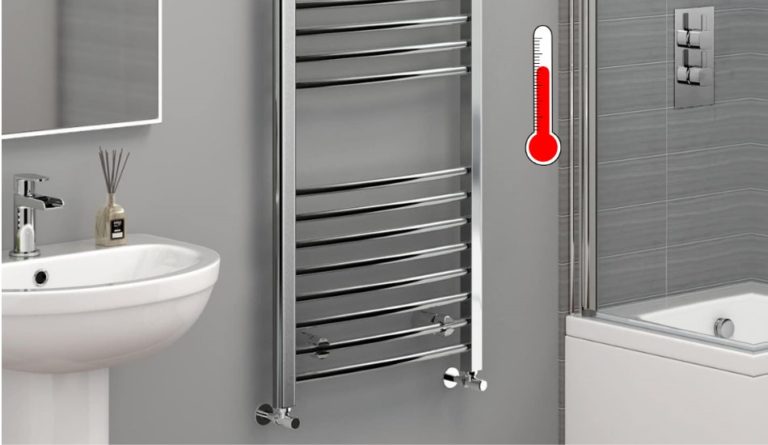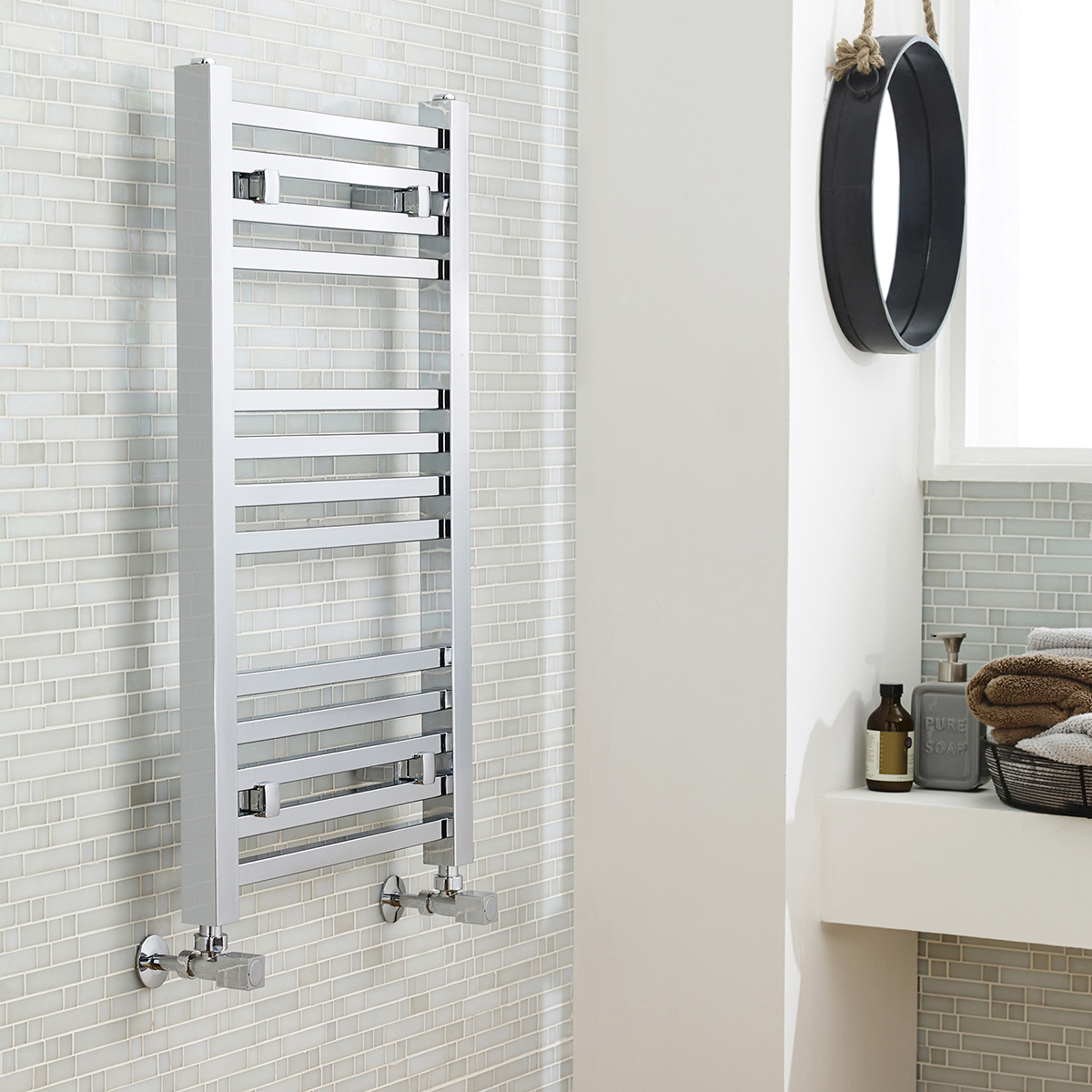Towel Rail Heating Mechanisms

Towel rails, those sleek and stylish fixtures found in modern bathrooms, serve more than just a decorative purpose. They are designed to gently warm your towels, providing a luxurious and comforting experience. But how exactly do these rails manage to generate heat? Let’s delve into the inner workings of towel rail heating mechanisms.
Towel Rail Heating Methods
Towel rails utilize different heating methods to achieve their warming function. Each method has its own advantages and disadvantages, influencing factors such as efficiency, cost, and installation complexity.
- Electric towel rails are the most common type. They work by using an internal heating element powered by electricity. This element heats up, transferring warmth to the surrounding metal of the rail, which in turn warms the towels. Electric towel rails are typically easy to install, as they simply plug into a standard electrical outlet. However, they can be less energy-efficient than other types of towel rails, particularly if used frequently.
- Hydronic towel rails, also known as water-heated towel rails, connect to a central heating system. They use hot water circulated from a boiler or heat pump to heat the rails. Hydronic towel rails offer a more energy-efficient solution, as they leverage the existing heating system. However, they require more complex installation, as they need to be connected to the plumbing system.
- Dual-fuel towel rails combine the advantages of both electric and hydronic heating. They have both an electric heating element and a connection to a central heating system. This allows for flexibility in operation, as you can choose to use electric heating when the central heating is off or use the hydronic system for greater energy efficiency when it is running. However, dual-fuel towel rails tend to be more expensive than single-fuel options.
Efficiency of Towel Rail Heating Systems
The efficiency of a towel rail heating system depends on several factors, including the type of heating method used, the size and material of the rail, and the wattage of the heating element.
Electric towel rails generally have lower efficiency compared to hydronic towel rails. This is because they directly convert electrical energy into heat, leading to some energy loss. Hydronic towel rails, on the other hand, utilize the existing central heating system, which is often more efficient.
Factors Affecting Towel Rail Heating Performance, Do towel rails heat the bathroom
The size and material of the towel rail significantly influence its heating performance. Larger rails have a greater surface area, allowing them to absorb and distribute more heat. Materials like stainless steel and aluminum are excellent conductors of heat, ensuring quick and even warming of towels.
The wattage of the heating element in electric towel rails directly affects their heat output. Higher wattage units generate more heat, but also consume more energy. It is crucial to choose a wattage that balances heating performance with energy efficiency.
Towel Rails and Bathroom Temperature

Towel rails, while primarily designed for warming towels, can also play a role in influencing the overall temperature of your bathroom. Their impact on bathroom temperature depends on factors such as the size of the bathroom, the type of towel rail, and the efficiency of your heating system.
Effectiveness of Towel Rails in Heating a Bathroom
Towel rails, although not a primary heating source, can contribute to a warmer bathroom environment. The amount of heat they generate is usually limited, but it can be enough to create a noticeable difference in smaller bathrooms. For instance, a towel rail with a power output of 500 watts can raise the temperature of a small bathroom by a few degrees, making it feel more comfortable.
Bathroom Layouts Where Towel Rails Contribute to Warmth
Towel rails can be particularly effective in specific bathroom layouts. Here are some examples:
- Small Bathrooms: In compact bathrooms, the heat from a towel rail can spread more efficiently, contributing to a warmer overall feeling.
- Bathrooms with Limited Ventilation: Towel rails can help offset the cooling effect of ventilation by adding a small amount of heat.
- Bathrooms with Windows: If your bathroom has a window that lets in cold air, a towel rail can help counteract the chill by providing localized warmth.
The Role of Insulation and Ventilation
Insulation and ventilation play crucial roles in maximizing the benefits of towel rail heating.
- Insulation: Well-insulated bathrooms retain heat more effectively, allowing the towel rail’s contribution to be more noticeable. This is particularly important in colder climates.
- Ventilation: While ventilation is essential for moisture control, it can also lead to heat loss. Choosing a bathroom ventilation system with a timer or humidity sensor can help minimize heat loss while maintaining a comfortable environment.
Practical Considerations for Towel Rail Heating: Do Towel Rails Heat The Bathroom

Towel rails, a staple in modern bathrooms, offer more than just a place to hang towels. They are a practical and stylish way to enhance bathroom comfort and warmth. Choosing the right towel rail for your bathroom, however, requires careful consideration of various factors. Understanding the practicalities of towel rail heating will help you make an informed decision.
Towel Rail Heating Options: Pros and Cons
Choosing the right towel rail heating option depends on your specific needs and budget. Here is a comparison of different options:
| Option | Pros | Cons |
|---|---|---|
| Electric Towel Rails | Easy to install, no need for plumbing, energy-efficient, can be used independently of central heating | Requires a dedicated electrical outlet, may be less powerful than other options |
| Hydronic Towel Rails | Integrated with central heating system, can provide significant heat output, energy-efficient when used with a condensing boiler | Requires plumbing installation, may require additional pipework, may not be as versatile as electric options |
| Combination Towel Rails | Offers flexibility of both electric and hydronic heating, can be used independently or with central heating | More expensive than single-heating options, may require more complex installation |
Towel Rail Installation Process and Challenges
Installing a towel rail is a relatively straightforward process, but it can present some challenges.
- Electric Towel Rails: Installation involves connecting the rail to a dedicated electrical outlet. Ensure the outlet is appropriately rated for the rail’s wattage. The process usually involves mounting the rail to the wall and connecting it to the power source.
- Hydronic Towel Rails: Installing hydronic towel rails requires plumbing expertise. The rail is connected to the central heating system, which involves running new pipework to the rail. This process can be more complex than installing electric rails, and may require professional assistance.
- Combination Towel Rails: Installation of combination towel rails involves a combination of electrical and plumbing connections. The process is similar to installing both electric and hydronic rails, requiring careful attention to both electrical and plumbing aspects.
Factors to Consider When Choosing a Towel Rail
Several factors influence the choice of a towel rail for your bathroom.
- Bathroom Size: Consider the size of your bathroom and the available wall space. A larger bathroom may accommodate a bigger towel rail with multiple bars, while a smaller bathroom may require a more compact model.
- Towel Usage: How many towels do you need to dry? A family bathroom might require a towel rail with multiple bars, while a smaller bathroom might suffice with a single-bar rail.
- Heating Requirements: Consider how much heat you need in your bathroom. A hydronic towel rail integrated with your central heating system can provide significant heat output, while an electric towel rail might be sufficient for a smaller bathroom.
- Budget: Towel rails vary significantly in price. Electric towel rails are generally more affordable than hydronic or combination rails.
- Aesthetics: Choose a towel rail that complements the style of your bathroom. They come in various finishes, such as chrome, brushed nickel, and black, to match your bathroom fixtures.
Optimal Towel Rail Placement for Maximum Heat Distribution
Do towel rails heat the bathroom –
[Image Description: The illustration depicts a bathroom with a towel rail positioned strategically for optimal heat distribution. The towel rail is mounted on the wall, above the bathtub or shower area, facing the center of the room. This placement allows for maximum heat dispersion throughout the bathroom, ensuring a comfortable and warm environment. ]
While heated towel rails are fantastic for warming up towels, they aren’t always the most aesthetically pleasing solution. For a sleek and modern look, consider a glass towel shelf bathroom design. This can offer a practical and stylish alternative, allowing you to display towels without the need for heat.
However, if you truly desire warm towels, a heated towel rail remains a great option, particularly in colder climates.
While towel rails can be heated, they are not the primary source of warmth in a bathroom. If you’re looking to enhance your bathroom’s ambiance and create a luxurious feel, consider investing in high end bathroom towel bars.
These elegant fixtures can add a touch of sophistication to your space, while also providing a convenient and comfortable way to warm your towels after a relaxing bath or shower.